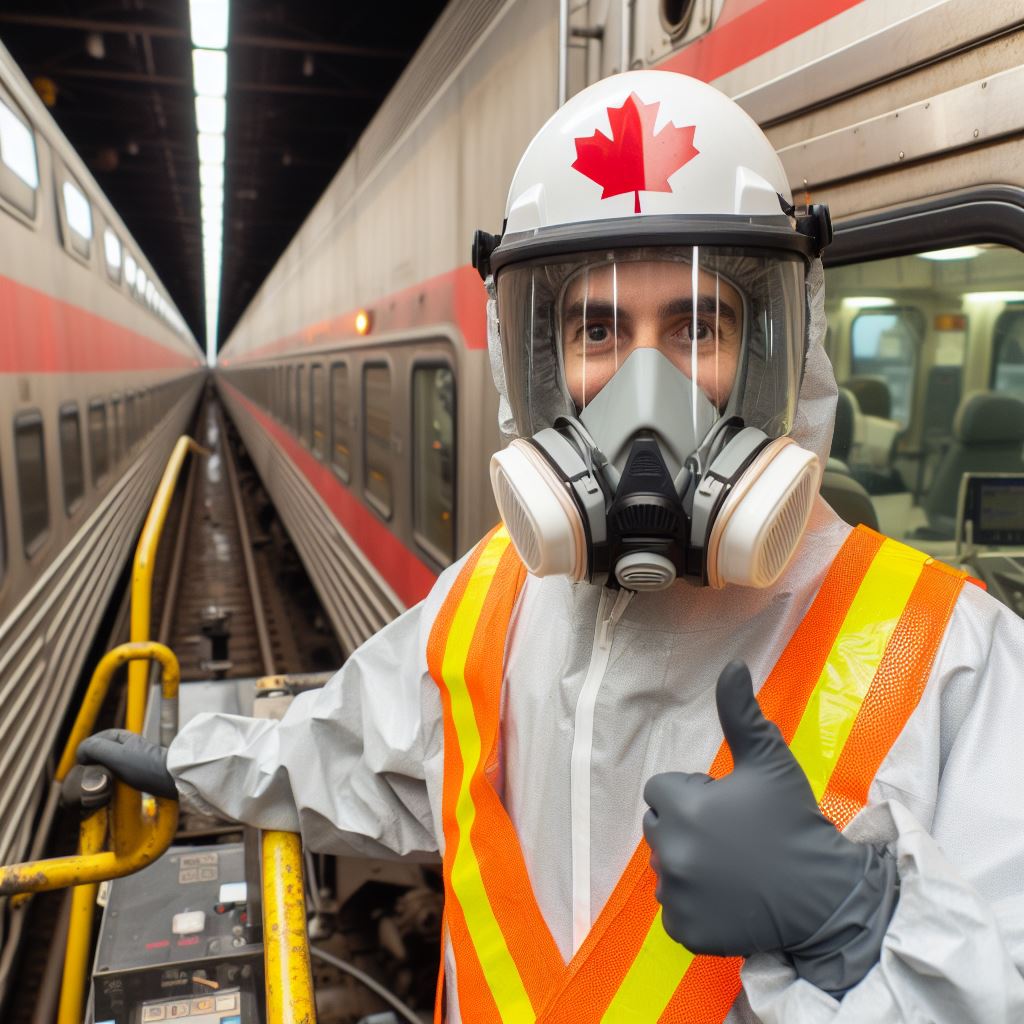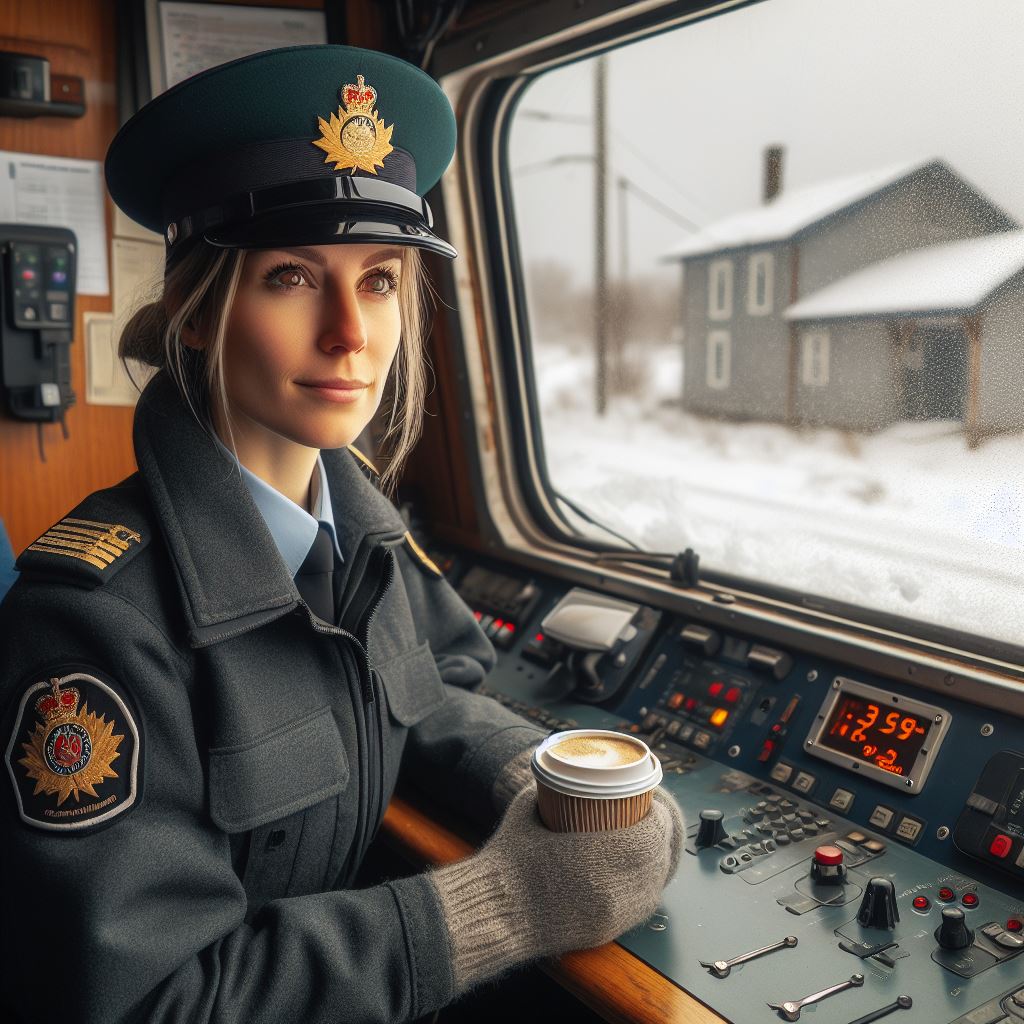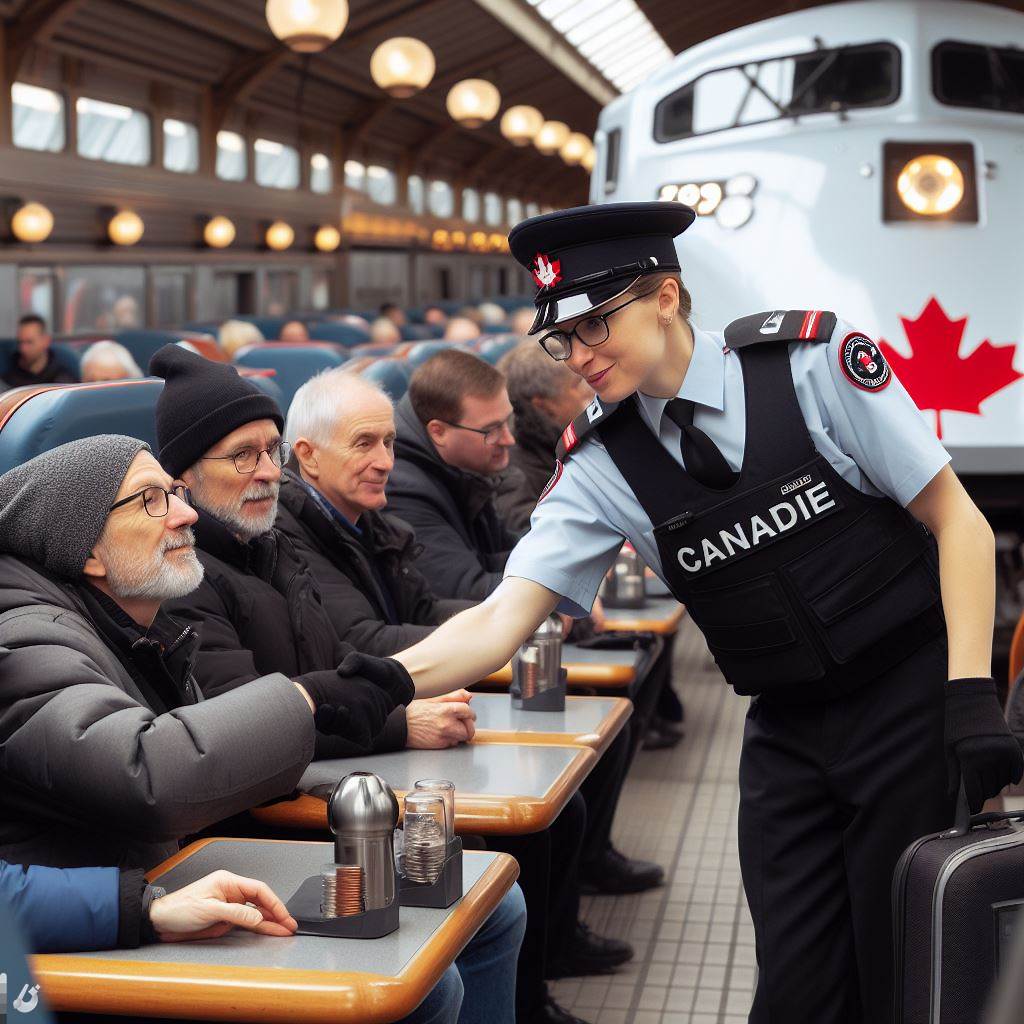Introduction
Train operators are responsible for the safe and efficient movement of trains.
To ensure their safety and the safety of others, it is essential that they wear proper gear.
The gear includes a hard hat, safety glasses, earplugs, gloves, and steel-toed boots.
Wearing proper gear is significant because it can prevent injuries and save lives.
In this blog post, we will discuss the essential gear for train operators and its significance in ensuring safety and efficiency.
The post will be divided into five sections: Introduction, Hard Hat, Safety Glasses, Earplugs, Gloves, and Steel-Toed Boots.
In the introduction, we will introduce the topic of essential gear for train operators and state the importance of the gear in ensuring safety and efficiency.
In the following sections, we will discuss each piece of gear in detail, including its purpose, how to use it, and why it is essential.
By the end of this blog post, you will have a better understanding of the essential gear for train operators and why it is crucial to wear it.
Remember, safety is everyone’s responsibility, and it is up to each of us to do our part to keep ourselves and others safe. So, let’s get started!
Personal Protective Equipment (PPE)
In the field of train operation, the safety of train operators is paramount.
Essential for ensuring protection, personal protective equipment (PPE) includes specialized clothing and gear designed against workplace hazards.
The purpose of PPE
PPE serves a crucial purpose in providing defense against potential dangers and minimizing the risk of injury or illness.
It acts as a barrier between the train operators and hazardous elements they might encounter while carrying out their duties.
Examples of essential PPE for train operators
- High-visibility clothing: Train operators must wear high-visibility clothing to enhance their visibility to others, especially in low-light conditions or when working near moving trains. This helps prevent accidents by ensuring they can be easily seen by their colleagues and passengers.
- Steel-toed boots: Train operators often need to work in areas where heavy objects and equipment are present. Steel-toed boots provide protection against potential foot injuries caused by falling objects or accidental impact.
- Hard hats: Train operators encounter various situations where head protection is vital. Hard hats shield their heads from falling objects, bumps, or other overhead hazards that could cause head injuries.
- Gloves: Train operators frequently handle equipment and tools that can pose risks to their hands. Gloves help protect against cuts, abrasions, chemical exposure, and extreme temperatures, ensuring their hands remain safe and functional.
Importance of wearing PPE
Wearing PPE is of utmost importance for train operators as it directly contributes to their overall safety and well-being.
The significance of wearing PPE can be understood from the following perspectives:
- Injury prevention: PPE acts as a shield, preventing direct contact between the train operators’ bodies and potential hazards. This significantly reduces the risk of injuries such as cuts, burns, or fractures.
- Compliance with regulations: Many countries have strict regulations and safety standards that mandate the use of PPE in workplaces, including train operations. By wearing PPE, train operators adhere to these regulations, ensuring legal compliance and avoiding penalties.
- Confidence and peace of mind: Wearing the appropriate PPE gives train operators a sense of confidence and peace of mind. They can focus more on carrying out their responsibilities without constantly worrying about their safety, leading to enhanced job performance.
- Role modeling: Train operators wearing PPE set a positive example for others working in the railway industry. Colleagues and new recruits are more likely to follow safety protocols when they witness train operators prioritizing their own protection through the use of PPE.
Basically, personal protective equipment (PPE) is essential for train operators to ensure their safety and well-being while performing their duties.
Equipment such as high-visibility clothing, steel-toed boots, hard hats, and gloves play a vital role in protecting train operators from hazards they may encounter.
By wearing PPE, train operators proactively mitigate risks, comply with regulations, and create a safer working environment for themselves and others.
Read: A Day in the Life of a Train Operator in Canada
Communication Devices
Effective communication is crucial in train operations as it ensures smooth coordination among operators, staff, and passengers.
Essential communication devices for train operators
- Two-way radios: These devices allow train operators to communicate with other operators, as well as station staff and dispatchers, in real-time.
- Hands-free headsets: Headsets enable train operators to communicate while keeping their hands free to operate the train and perform other tasks.
- Emergency alert systems: These systems are designed to quickly and efficiently notify all personnel on the train in case of emergencies or other critical situations.
The role of each communication device in enhancing communication on trains
- Two-way radios: These radios facilitate immediate communication between train operators and station staff, enabling quick response to operational issues or emergencies.
- Hands-free headsets: Headsets provide train operators with the ability to communicate efficiently without compromising their ability to safely operate the train.
- Emergency alert systems: These systems ensure that all personnel on the train are promptly informed about any emergency situations, allowing for a coordinated response and passenger safety.
Effective communication plays a vital role in the smooth and safe operation of trains.
Train operators need to be able to communicate effectively with fellow operators, station staff, and dispatchers to ensure seamless coordination and minimize delays.
They also need to be able to communicate with passengers to provide them with necessary information and address any concerns they may have.
Two-way radios
Two-way radios are an essential communication device for train operators.
Unlock Your Career Potential
Visualize a clear path to success with our tailored Career Consulting service. Personalized insights in just 1-3 days.
Get StartedThese radios allow for immediate and direct communication between operators and various personnel involved in train operations.
With two-way radios, operators can quickly relay information about any operational issues or emergencies, ensuring a prompt response and resolution.
Hands-free headsets
Hands-free headsets are another important communication tool for train operators.
These headsets enable operators to communicate without having to use their hands, ensuring that they can maintain full control of the train and perform other tasks as needed.
Hands-free headsets also improve the clarity of communication, particularly in noisy environments, reducing the risk of miscommunication or misunderstandings.
The role of each device in enhancing communication on trains
In emergency situations, quick and effective communication is critical.
Emergency alert systems are designed specifically for this purpose.
Train operators swiftly inform all personnel about emergencies, ensuring coordinated responses and safety.
In general, effective communication is vital in train operations.
Two-way radios, hands-free headsets, and emergency alert systems are essential communication devices that enhance communication on trains.
Train operators use devices for prompt communication, ensuring coordination, safety, and passenger satisfaction.
Effective tools address issues and deliver excellent service.
Read: Canadian Rail Operator: Skills and Qualifications
Safety Equipment
In train operations, safety equipment is essential to protect train operators and passengers.
There are several types of safety equipment that train operators must have:
Fire extinguishers
Fire extinguishers are vital when it comes to controlling and suppressing fires that may break out on the train.
By having fire extinguishers readily available, train operators can quickly respond to fire emergencies and prevent them from escalating.
First aid kits
First aid kits are essential for providing immediate medical attention to passengers or crew members who may sustain injuries during train operations.
With a well-stocked first aid kit, train operators can administer basic first aid and stabilize individuals until professional medical help arrives.
Emergency escape tools
Emergency escape tools are necessary for train operators to ensure the safe evacuation of passengers in emergency situations.
These tools, such as hammers or breakable windows, can be used to break through doors or windows if the normal exit routes are inaccessible or blocked.
Safety harnesses
Safety harnesses play a crucial role in protecting train operators.
They prevent operators from being thrown or injured during sudden stops or collisions.
By wearing safety harnesses, operators can secure themselves and maintain control over the train even in hazardous situations.
How safety equipment can prevent accidents and mitigate risks
Train operators must actively train in using safety tools, not just having them. Regular programs ensure swift emergency responses and proper safety equipment usage.
In essence, safety equipment is a fundamental aspect of train operations.
It not only protects train operators but also ensures the safety of passengers on board.
By having fire extinguishers, first aid kits, emergency escape tools, and safety harnesses, train operators can prevent accidents and mitigate risks effectively.
Consistent training and awareness on the usage of safety equipment are equally crucial for the smooth functioning of train operations.
Read: Railway Operator Safety Practices in Canada

Tools and Accessories
A train operator’s job requires the use of various tools and accessories to ensure the smooth operation of trains and the safety of passengers and crew members.
Various tools and accessories train operators require
Train operators rely on a range of tools and accessories to perform their duties effectively.
These tools enable them to deal with mechanical issues, emergencies, and ensure the overall safety of operations.
Essential tools and accessories for train operators
- Flashlights: Train operators need reliable flashlights to illuminate their surroundings, especially in dimly lit areas.
- Multi-tools: Having a versatile multi-tool ensures train operators can quickly address minor repairs or maintenance tasks.
- Whistles: Whistles are used by train operators to signal their presence, warn of approaching trains, or attract attention during emergencies.
- Safety glasses: Train operators wear safety glasses to protect their eyes from flying debris or any potential hazards.
Functions and importance of each tool or accessory
- Flashlights: Flashlights provide train operators with a reliable source of light in dark environments, allowing them to inspect tracks, read manuals or documents, and ensure passenger safety during evacuation procedures.
- Multi-tools: A multi-tool combines various functions in one convenient device. Train operators can use it to tighten loose screws, cut wires, or perform other minor repairs and maintenance tasks without the need for separate specialized tools, saving time and effort.
- Whistles: Whistles are essential communication tools for train operators. They emit a unique sound signal, cutting through train noise, alerting operators to approaching trains, emergencies, or hazards for passenger, crew, or trespasser notification.
- Safety glasses: Safety glasses are crucial protective equipment for train operators. They shield their eyes from debris, dirt, dust, or any flying particles that can cause eye injuries. Safety glasses maintain clear vision and ensure train operators can concentrate on their tasks without worrying about potential eye hazards.
It is important for train operators to have these tools and accessories readily available at all times during their shifts.
By using flashlights, multi-tools, whistles, and safety glasses, operators can efficiently address various situations that may arise on the job, ensuring passenger safety and the smooth operation of trains.
In a nutshell, the tools and accessories discussed are vital for train operators to perform their duties effectively.
Flashlights, multi-tools, whistles, and safety glasses enable operators to navigate their surroundings, address minor repairs, communicate effectively, and protect themselves.
By utilizing these tools and accessories, train operators ensure the safety and comfort of passengers while maintaining the efficiency of train operations.
Read: Career Path: Becoming a Train Conductor
Delve into the Subject: Transit Tech: Innovations in Canadian Rail
Conclusion
Train operators must wear proper gear to ensure their safety and the safety of others.
The essential gear discussed in this blog post includes a hard hat, safety glasses, earplugs, gloves, and steel-toed boots.
Wearing proper gear is significant because it can prevent injuries and save lives.
Train operators should prioritize safety and obtain the necessary gear to perform their duties effectively.
Safety is a top priority in the rail industry, and it is essential to take all necessary precautions to ensure that everyone goes home safely at the end of the day.
Train operators should also be aware of the risks associated with their job and take steps to mitigate them.
Proper gear reduces operator injury risk, ensuring readiness for any situation.
Safety is everyone’s responsibility; we must all contribute to keeping ourselves and others safe.
So, let’s prioritize safety and make sure that we have the necessary gear to perform our jobs safely and effectively.




